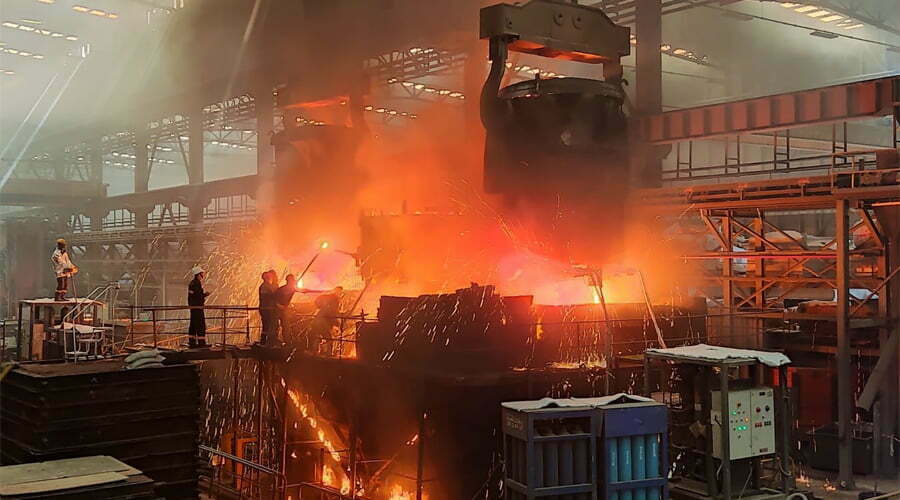Refractory Materials ( induction furnaces )
The development of induction furnaces is closely related to the advancement of refractory technology.
In any case, the selection of furnace lining materials for induction furnaces is based on furnace utilization and economy.
Regardless of the crucible lining of the crucible furnace or the melting trench lining of the trench furnace, for the sake of electrical tight coupling, the thickness of the furnace lining strives to be as thin as possible without affecting the service life.
The increase in the capacity of the grooved induction furnace, the expansion of the application range (from the melting of non-ferrous metals to the melting of ferrous metals), from the heat preservation of cast iron to the heat preservation of cast steel and the improvement of the power of a single induction body are all in the development of melting trench refractory materials.
It was only realized after the furnace building process was improved.
Induction Furnace Requirements
In order to ensure the normal operation of the induction furnace, the furnace lining refractories should meet the following requirements as far as possible:
① Sufficient Refractoriness.
Materials with a refractoriness higher than 1580°C are called refractories.
Induction furnace lining operating temperature is generally lower than the temperature of the molten metal.
However, based on the requirements for the life of the furnace lining, the accidental or frequent over-temperature of the molten pool and the molten groove must be considered. It is often unsafe to use materials with low refractoriness and softening temperature in cast iron induction furnaces.
As the lining material of cast iron induction furnace, its refractoriness should be higher than 1650~1700℃, and its softening temperature should be higher than 1650℃.
②Good Thermal Stability.
The induction furnace transfers energy by electromagnetic induction exchange.
In order to ensure the high electrical efficiency of the furnace, the thickness of the furnace lining of the induction coil part is limited, which makes the furnace lining work under the condition of a large radial temperature gradient.
In addition, the temperature of the furnace lining is always changing due to the influence of charging, iron tapping and even shutdown during the working process of the furnace, and the furnace lining is often cracked due to uneven heating, which reduces the service life of the furnace lining.
Therefore, as a refractory material for induction furnaces, it should have excellent thermal stability.
③Good Chemical Stability.
The chemical stability of the material is closely related to the life of the furnace lining.
The lining material should not be hydrolyzed and decomposed at low temperature, and should not be easily decomposed and reduced at high temperature.
The additive produces a chemical reaction that does not contaminate the molten metal.
④The Thermal Expansion Coefficient Is Small.
With the change of temperature, the volume should be relatively stable, without violent expansion and contraction.
⑤ Has High Mechanical Properties.
It must be able to withstand the impact of the charge at low temperature;
When the metal is in a high temperature molten state, it should be able to withstand the net pressure of the molten metal and strong electromagnetic stirring;
Wear-resistant and corrosion-resistant under the long-term scouring action of molten metal.
⑥ Good Insulation Performance.
The furnace lining must not conduct electricity at high temperature, otherwise it will cause leakage and short circuit, resulting in serious accidents.
⑦The Construction Performance of The Material Is Good.
Easy to repair and good sintering performance, convenient for furnace construction and maintenance.
Induction furnaces have very strict requirements on refractory materials, and almost no natural refractory materials can meet the above requirements, which requires the selection of appropriate refractory materials according to different operating conditions.
At the same time, the necessary synthesis and reprocessing of natural mineral resources should be carried out to make its performance meet the requirements of induction furnaces.
No matter what kind of induction melting furnace, EAF, SAF, LF, etc., Xi’an Hani Tech will provide suitable, professional, efficient and low energy consumption induction furnaces to every customer according to specific raw materials and melting requirements.
Any questions or needs, please feel free to contact us.


One Response
you have described cast Iron induction furnace, what about non-ferrous and others?